WITAMY W WARSZAWIE - NAJBARDZIEJ KULTURALNEJ STOLICY W OKOLICY! // WELCOME TO WARSAW - THE MOST CULTURAL CAPITAL IN THE NEIGHBOURHOOD!
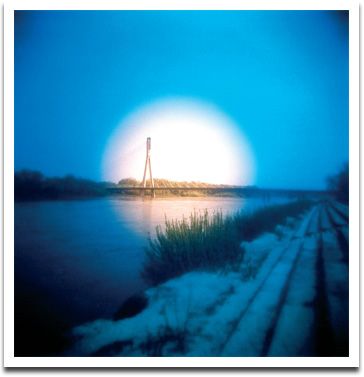
Most Świętokrzyski - ikona współczesnej Warszawy, gra w filmach, reklamach, teledyskach /
Świętokrzyski Bridge - an icon of modern Warsaw, starring in films, tv adverts, music videos
fot. Marta Zasępa www.martazasepa.lap.pl
Warszawę, oprócz biznesmenów i zwykłych turystów, których interesują głównie Chopin i zabytki, odwiedzają goście ciekawi niestandardowych atrakcji. Wielu z nich - architektów, grafików, dziennikarzy - oprowadzał Grzegorz Piątek - również architekt i dziennikarz, związany z miesięcznikiem "Architektura-murator".
Aside from businesspeople and run-of-the-mill tourists, who are interested mainly in Chopin and other standards, Warsaw is visited by numerous guests interested in non-conventional attractions. Many of them - architects, journalists, graphic artists - have the pleasure of being shown around by the architect and journalist Grzegorz Piątek who works for the monthly magazine "Architektura-murator".
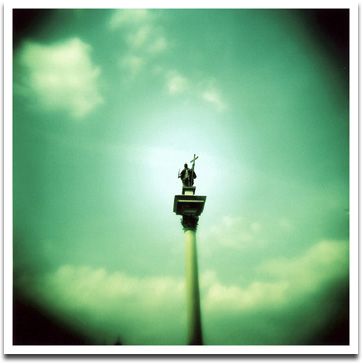
Kolumna Zygmunta - pomnik wdzięczności dla króla Zygmunta III Wazy, który przeniósł stolicę
Polski do Warszawy. Najwygodniejszy punkt spotkań na Starym Mieście /
Zygmunt's Column - the statue commemorate king Zygmunt III Waza, who had moved the capital of Poland
from Krakow to Warsaw. The most convenient meeting point in the Old Town
fot. Marta Zasępa www.martazasepa.lap.pl
Z Grzegorzem Piątkiem rozmawia Monika Brzywczy / Monika Brzywczy interview Grzegorz Piątek
Co jest prawdziwym warszawskim turystycznym hitem?
Przybysze z Zachodu szukają tego, co dla nich egzotyczne, komunistycznych smaczków, odrobiny brudku i zacofania. Często chcą oglądać bloki - to jest to, co kojarzą choćby z Dekalogu Krzysztofa Kieślowskiego, stereotypowe wyobrażenie na temat dawnego bloku wschodniego. Do legendy przeszła grupa studentów architektury z zachodnich Niemiec, którzy wynajęli mieszkanie w bloku i potem napisali artykuł o tym, jak cudownie w nim mieszkać, że dzięki cienkim ścianom można uczestniczyć w życiu sąsiadów, że zachodzi tam interakcja społeczna, której nie znają z nudnego, bezpiecznego i komfortowego Zachodu. Goście kojarzą też Pałac Kultury i Nauki. Wielu chce odwiedzić bazar na Stadionie Dziesięciolecia. Jestem zaskoczony jego sławą, bo przecież nikt go nie reklamuje.
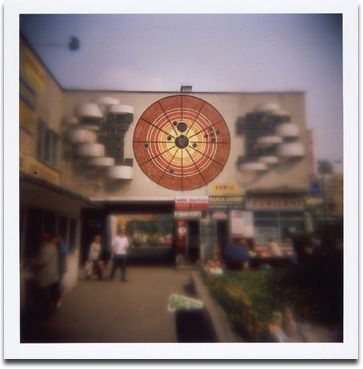
Mozaika na pawilonie handlowym przy ul. Egipskiej - pamiątka
po obchodach 500-lecia urodzin Kopernika (1973)
The mosaic on a department store at Egipska St. - souvenir
of the 500th anniversary of Copernicus’ birth (1973)
fot. Marta Zasępa www.martazasepa.lap.pl
A jak wyglądałaby polecana przez Ciebie wycieczka po Warszawie?
Na pewno szybko załatwiłbym Stare Miasto - jest malutkie i dość nieciekawe. Ważne jest tylko,
by zdawać sobie sprawę, że po II wojnie światowej wybudowano je od nowa. Najciekawsze są tam schody ruchome z 1949 roku, prowadzące w dół z placu Zamkowego, które Moskwa podarowała Warszawie. To taka namiastka moskiewskiego metra.
Kierując się na południe warto obejrzeć zaprojektowany przez Normana Fostera biurowiec Metropolitan, otwarty w 2003 roku (pl. Piłsudskiego), narodową galerię sztuki Zachęta (pl. Małachowskiego, www.zacheta.art.pl) - choć stuletnia fasada sugerowałaby inaczej, często są tam dobre, przekrojowe wystawy polskiej sztuki współczesnej.
Obowiązkowo Pałac Kultury - widok z 30. piętra pozwala ogarnąć całe skomplikowane miasto, na parterze jest niesamowite, archaiczne Muzeum Techniki, które pokochają amatorzy retrokiczu i dziwnych maszyn oraz wszyscy duzi chłopcy, a od strony Świętokrzyskiej - Pałac Młodzieży z monumentalnym basenem i ogrodem zimowym.
Po drugiej stronie Alej Jerozolimskich kolejna ciekawostka techniczna - tajemniczy Fotoplastikon (Aleje Jerozolimskie 51, w podwórzu, www.fotoplastikon.stereos.com.pl), który działa nieprzerwanie od 1905 roku.
W południowym centrum warto zobaczyć stalinowską dzielnicę MDM (Marszałkowska Dzielnica
Mieszkaniowa) z monumentalnym placem Konstytucji i przytulnym placem Zbawiciela. Stamtąd niedaleko do CSW (Centrum Sztuki Współczesnej, Aleje Ujazdowskie 6, www.csw.art.pl) oraz do niesamowitej ambasady holenderskiej (ul. Kawalerii 10, www.nlembassy.pl) projektu Erika van Egeraata. Można też zrelaksować się w zabytkowym parku w Łazienkach Królewskich.
Odważnych zabiorę na obiad do baru mlecznego, a bardziej delikatnych - do którejś z knajp w długim budynku przy ul. Żurawiej 6/12 lub do Między Nami (ul. Bracka 20).
Te okolice są też rajem dla miłośników architektury współczesnej i XX-wiecznej: z lat '30 jest Muzeum Narodowe, które przypomina architekturę nazistowskich Niemiec (Aleje Jerozolimskie 3, www.mnw.art.pl), i ekspresjonistyczna centrala banku BGK (Aleje Jerozolimskie 7), z '40 - Dom Partii - czyli monumentalna dawna siedziba partii komunistycznej (Aleje Jerozolimskie 5) i dawny Centralny Dom Towarowy (obecnie Smyk, ul. Krucza 50), a z końca '90 - postmodernistyczny gmach Warszawskiej Giełdy Papierów Wartościowych (ul. Książęca 4).
Jeśli jeszcze jest czas warto zajrzeć na Powiśle - niegdyś najgorszą dzielnicę Warszawy, która odżywa dzięki życiu studenckiemu. Tam są najciekawsze kawiarnie, można odpocząć w ogrodzie na dachu Biblioteki Uniwersyteckiej (ul. Dobra 56/66), jednego z nielicznych nowoczesnych budynków, który kochają i zwykli ludzie, i krytyka architektoniczna, stamtąd popatrzeć na ikonę Warszawy - most Świętokrzyski, na Pragę - dzielnicę na drugim brzegu Wisły, a na deser zrobić sobie zdjęcie przy Świecących Różowych Jelonkach (Wybrzeże Kościuszkowskie/Lipowa) w parku nad rzeką.
What’s at the top of your hit list of Warsaw’s tourist attractions?
Visitors from the West generally seek the exotic, some of the old communist ambience, some dirt and backwardness. Often they want to see some of the jumbo tower blocks - the ones they recall from watching Krzysztof Kieślowski’s Decalogue, and they have their stereotypical views on the old East Bloc. There is a legendary group of German students who rented an apartment in a pre-fab monstrosity in Warsaw, only to write an article about how wonderful it was to live there, that the thin walls made it possible to participate in one’s neighbors’ lives, that there are other forms of social interaction unknown in the boring, safe, and comfortable West. They generally know of the Palace of Culture and Science (Pałac Kultury i Nauki), that stalinist skyscraper downtown. Many wish to visit the Vietnamese-Russian bazaar at the 10th Anniversary Stadium (Stadion Dziesięciolecia), which is utterly incredible as it’s not exactly the type of place that anyone is trying to promote.


Warszawa - pierwszy powojenny polski samochód, produkowany w latach 1951-1973 /
"Warsaw" - the first car manufactured in Poland after the war, in 1951-1973
fot. Marta Zasępa www.martazasepa.lap.pl
And what’s your recommended tour of the town?
Definitely I’d do up the Old Town, but make it snappy as it’s small and dull. The place was rebuilt from scratch after WWII. The most interesting thing has got to be the escalator that was installed in 1949 as a gift from the city of Moscow to the inhabitants of Warsaw. It’s an ersatz ride on the Moscow metro.
Heading south one should see the Metropolitan office building designed by Norman Foster and built in 2003 (Piłsudski Sq.), the Zachęta National Art Gallery (Małachowski Sq., www.zacheta.art.pl). Don’t let the old facade fool you, this gallery features good retrospectives of contemporary Polish art.
Next on the list of mandatory stops is the Palace of Culture and Science and the view from the 30th floor, where you can take in the complexity of the whole city. The ground floor houses an amazingly archaic Museum of Technology (Muzeum Techniki) adored by lovers of retro kitsch and big machines, as well as grown men of all ages. Also on the ground floor, the Palace of Youth (Pałac Młodzieży) wing features a monumental swimming pool and a winter garden.
Across Jerozolimskie Avenue there is another technical wonder in the form of the Fotoplastikon (51 Jerozolimskie Ave., courtyard, www.fotoplastikon.stereos.com.pl) which has been in uninterrupted service since the day it opened in 1905.
Moving down Marszałkowska to southern downtown we come upon the stalinist district of MDM (Marszalkowska Residential District), featuring both the monumental Konstytucji Square, and the cozy Zbawiciela Square. From here it is not far to the Center for Contemporary Art (6 Ujazdowskie Ave., www.csw.art.pl), and to the outstanding Dutch Embassy (Kawalerii St. 10, www.nlembassy.pl) designed by Erik van Egeraat. I would also recommend a brief rest in Łazienki Park.
I usually take the bravehearted for lunch to a communist era milk bar, and the more squeamish to one of the small restaurants in the long building on 6/12 Żurawia St. or to Między Nami (20 Bracka St.).
This neighborhood is heaven for fans of modern architecture and in particular of the 1930s. Here we have the National Museum which looks like much of the architecture of Fascist Germany (3 Jerozolimskie Ave., www.mnw.art.pl), the expressionist headquarters of the BGK Bank (7 Jerozolimskie Ave.). The 1950s brought us the Communist Party House (5 Jerozolimskie Ave.) and the old Central Department Store (currently Smyk, 50 Krucza St.). In the late 1990s a postmodernist Stock Exchange was built at 4 Książęca Street.
If we have any time left I would also recommend we take a look at Powiśle, at one time Warsaw’s worst district but one that is being regentrified due to students. It is here that we find the most interesting cafes; here we can relax in the gardens on the roof of the University Library (56/66 Dobra St.), one of the few modern buildings loved by both normal people and architectural critics.
From this perspective we can look out onto one of Warsaw’s icons the Świętokrzyski Bridge, as well as to Praga, another district of Warsaw on the other side of the river. And finally for dessert I recommend taking a picture in front of the Pink Glowing Deer in the park along the river (Wybrzeże Kościuszkowskie / Lipowa St.).
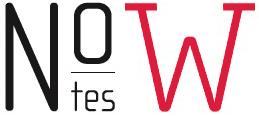

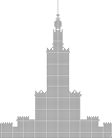
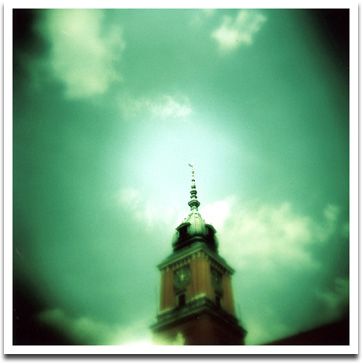
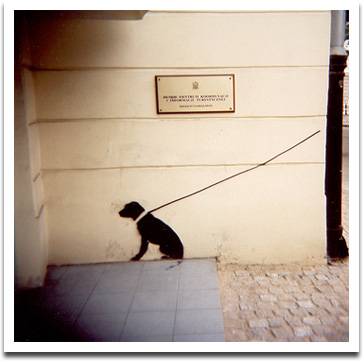








1 comments:
Hello
My work is to investigate Mafia operations using large numbers of captive women for the purposes of prostitution and internet pornography production. This however is not simply a matter of informing the authorties, which continues to have no effect at all. I write to you today as part of the alternative strategy of raising public awareness because one of these 'studios' is near to you. Please help by tellng those that you know.
Thank you.
Keith Jones
Dot.Com
Jerozolimskie Ave. 139
302-304 Warsaw, Poland
phone +48603988566
e-mail: webmaster@goodsignups.com
Post a Comment